“It’s so tough, just being up there” – Interview with the director of ‘Sherpa’
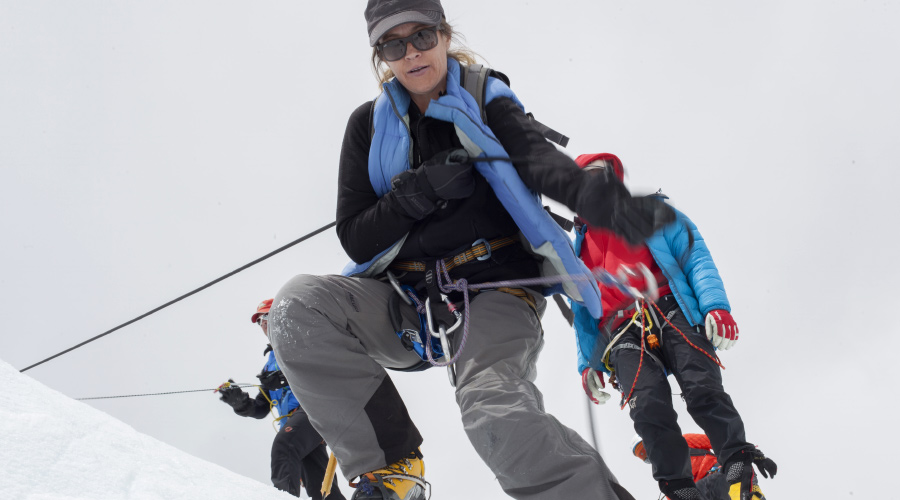
It’ll come as no surprise, given the title, what the focus of new Everest documentary Sherpa is. Revealing in its insight, the film’s a welcome addition to the generally explorer-oriented cinema set atop the mighty Himalayas. Director Jennifer Peedom chatted to us about her film, capturing the evolving culture of Sherpa, and accompanying them to see how essential they are to commercial climbing teams.
FLICKS: Before digging down into the events in the film, I’d just like to go back to some of the background behind the start of the production and your initial choice to focus the film on Sherpa.
JENNIFER PEEDOM: Where my interest came was as a young, aspiring documentary filmmaker in my 20s. I found myself in the Himalayas and, I guess, discovered that my body worked pretty well at altitude, so I ended up getting offered some work as a camera operator on high-altitude expeditions. That was from pretty much 2003, and I ended up doing three big Himalayan expeditions with the Sherpa team at the heart of this film.
I was always interested right from the start in the Sherpa angle. In 2004, I did a piece for a programme here in Australia called Dateline, on SBS. And it just seemed to me that it was a really interesting dilemma for the Sherpas because, clearly, climbing the mountain itself was really seriously at odds with their beliefs. And so it was always an angle that interested me. And I think the fact that I made that first film really early on led to access, really, because in documentary everything is access. And the following year, when I returned, we climbed a mountain called Cho Oyu in Tibet, again, with that same team of Sherpas. I took my laptop and I showed them the film, and I think they were kind of stunned and delighted and just surprised that someone had actually for the first time in their experience focused the cameras on them rather than the foreign climbers.
I think that set up a strong relationship between me and them. Making that early film and the trust that I guess I gained way back then, meant I had the access to make this film a decade on. So it’s funny how things kind of play out. But I ended up doing three Himalayan trips with that same Sherpa team on Russell Brice’s expeditions and it just frustrated me that the Sherpas ended up on the cutting-room floor. There were all sorts of things going on on the mountain and Sherpas saving lives and it’d always be filmed, but the finished product always seemed to bring everything back to the hero narrative, the foreign climbers rather than the Sherpas, and it just struck me that there was an opportunity to address that balance a little bit.
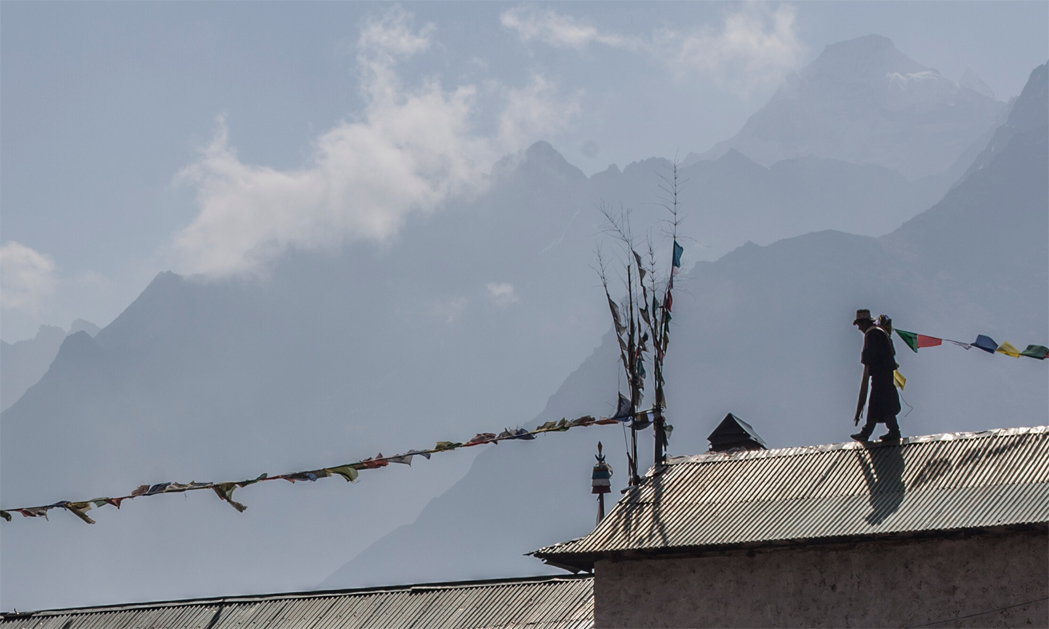
As you were crawling up the side of Everest on those initial trips, were you accompanying climbers or were they specifically filming expeditions?
You always tend to embed. So the one I did with the Sherpas, I basically just bought myself a ticket on one of Russell Brice’s Everest expeditions. On that particular trip, I was just doing my own thing completely. It was just sole-camera operated, director, sound recordist – I did the whole thing. And that particular trip was to the North Col on Everest in Tibet. And so that was just a self-funded thing. I then got paid later on for the film, which probably barely covered my costs. Then on the big Discovery Channel series, I was employed by a production company that was producing the Beyond the Limit series for Discovery. And so I was just employed as a freelancer on those projects. But they were always just filming whoever was on one of Russell’s expeditions. Which is essentially the same thing that we did on this film: we signed for Russell’s expedition and got the permission of his clients to film. So in some ways, no different.
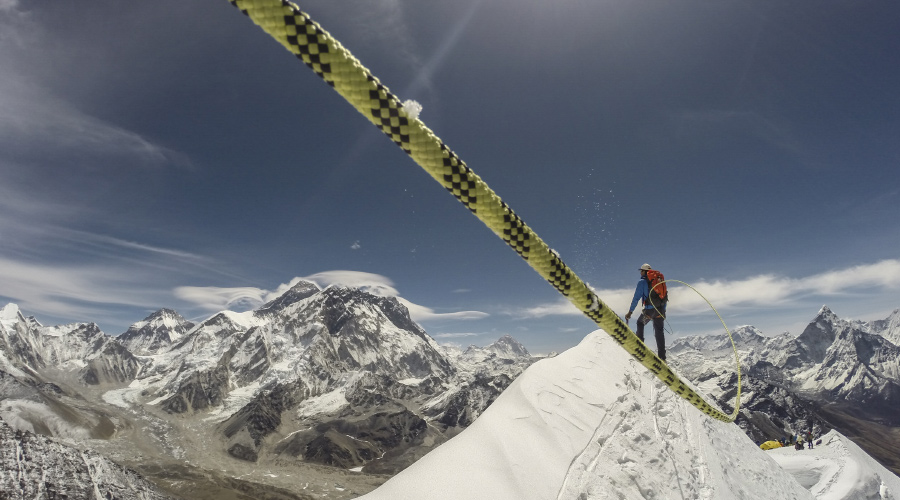
Between all the people that have paid to be up the mountain and everyone else that’s facilitating that for them. I just wonder if crewing on a shoot puts you more in that camaraderie with the support team. Or were you sort of in the grey area as someone shooting?
I think you’re probably right. It’s probably a bit of a grey area. Because the way that these expeditions are run is that the foreigners, of which we were, are kept very separate from the Sherpas. Certainly on our expeditions, the Sherpas have perfectly good quarters themselves. Russell looks after his Sherpas really well, but they’re elsewhere because they’re getting up and down in the middle of the night to go off through the icefall every second day. I think it’s a really uncomfortable truth to know that the Sherpas are heading off every night while you’re cosy in your sleeping bag – working.
And I guess as a camera operator, I always did have great camaraderie with the Sherpas because I was also lugging more equipment than the clients. For example, I’m having to carry my own camera gear and lenses and batteries and everything that goes with it. So you’re carrying extra weight than your average client. But you do sit somewhere in between, but certainly on a project like the Sherpa one in 2014, we were clearly spending more of our time, as much of our time as possible with the Sherpas rather than the foreigners. But we’d still have all of our meals in the foreigners’ dining tent and got on really well with them.
It’s interesting, isn’t it? Because it seems like it’s one of the few places in the world where you see, right in front of you, the reliance on the labour of indigenous people. For Westerners, obviously our society still relies on that very much, on the labour of others, but it’s so distant to us. Is it strange for the climbers to see that degree of labour going on in front of them?
It’s a really good question. I think it’s so tough, just being up there. When you’re on your ascent even up to base camp, every day, your body’s having to acclimatise to a new altitude and really rough conditions, and you’ve got headaches and you often feel nauseous. And so I think you’re just grateful for it. And I think the Russell sees it is that his job is not just to get one or two members of the team to the summit, it’s to get everyone to the summit. It used to be that getting one person to the summit was success. It doesn’t mean that anymore. I mean, all these people have paid their money and they all want to get to the summit.
His rationale is that these people need to conserve as much energy as possible so he can get them to the summit. And so I think everyone just accepts the fact that should be the case. In most cases, I think they’re probably really grateful for it.
But it’s really shocking when you see it in stark reality like that. It is. It does appear to be the last vestiges of colonialism playing out. And that is kind of really what it’s like. That is the truth of it: it is like that. But it’s a service industry.
I really tried not to be too black and white about goodies and baddies in this film. It just is what it is. There is a demand to climb Everest and there are many benefits to the Sherpas in having this work. As an ethnic group, they’ve become very wealthy in a short period of time, as compared to many other ethnicities in Nepal. And yet there’s a lot that is unfair about what is going on for the Sherpas. So it’s a double-edged sword. And it’s that tricky line. Because if climbing stopped tomorrow, if everyone said, “Okay, that’s it, Everest can’t be climbed anymore,” the Sherpa community would really suffer and so would the Nepalese tourism.
This is a country that needs all the income it can get right now. So you have to tread those lines, ethical lines, very carefully and not be too overt about saying things like, “all Sherpas are exploited by all foreign operators,” because it actually is not necessarily the case. But there’s lots of other shades of grey and nuances there where things aren’t necessarily as they should be. But when it all boiled down to it, I think what I wanted to do was to show what really goes on on Everest. People have this particular idea or romantic idea of what it is to climb Everest, and I guess I wanted to show from my perspective what I thought it was, and to the best of my ability document that from the Sherpas’ point of view, not being a Sherpa myself.
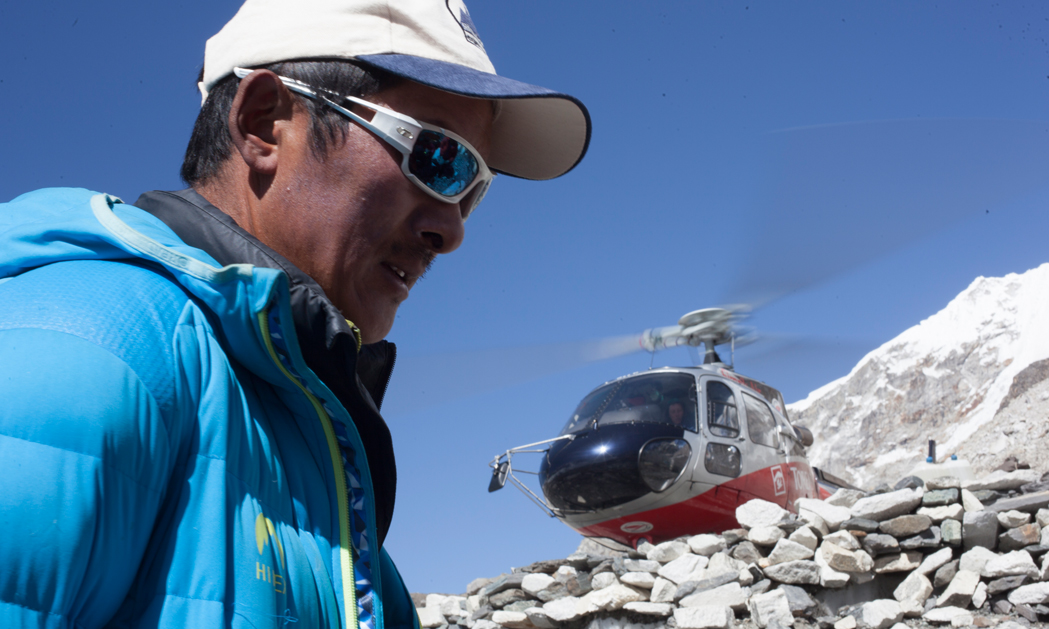
Because, as you say, it’s so unknown to us, what it’s like for the Sherpas working on Everest and their broader community, you don’t need to take an advocacy point of view.
I think I tried very hard not to make an issue film. I made a film about characters, and through that, various issues come to light. But I think ultimately that’s a more powerful way of telling those stories because people don’t feel like they’re being banged over the head with an activist film. And it may in a subtle way be that.
For me, it’s just more about awareness of the risks that the Sherpas are having to take on behalf of the foreign climbers. Because they’re unaware of that to a startling extent. And some of the foreign climbers on our expedition have now seen the film, and they’ve all been really positive about it, which has been great. I think they have been surprised at the extent to which they didn’t really realise what was going on in that crisis, in the protests. And it’s a benefit of hindsight in being able to listen to everything completely translated. I think they were hearing it from different people who had different agendas, and weren’t getting a clear line to the story of what was really going on. So I think they were surprised.
In capturing tragic events in the film or their immediate aftermath, I think it’s obviously to the film’s advantage in that you don’t have to rely on accounts or look back necessarily historically to find some of the things that have inflamed the relationship between Sherpas and the expeditions.
You say that, but what we don’t know is what else might have happened. And it certainly didn’t feel, at the time, that this is an advantage to the film because in fact it felt like we probably didn’t have a film anymore for a while there.
What I have observed from doing three of these Himalayan expeditions is that most of the drama happens on summit days. So what really surprised us was how early and how bad this was. And you’re absolutely right that it does ultimately strengthen the film because it highlights those disproportionate risks in a way that absolutely nothing else could have. But you would be so surprised as to what you would see and lives being risked and the little things that build tension in the relationship. And it was all of those things that I had witnessed over the years that I knew I would get again because that happened every year. But they usually happen on summit day and a lot of them happen on the descent. But what happened instead, instead of a whole bunch of little things, it was clearly this massive thing.
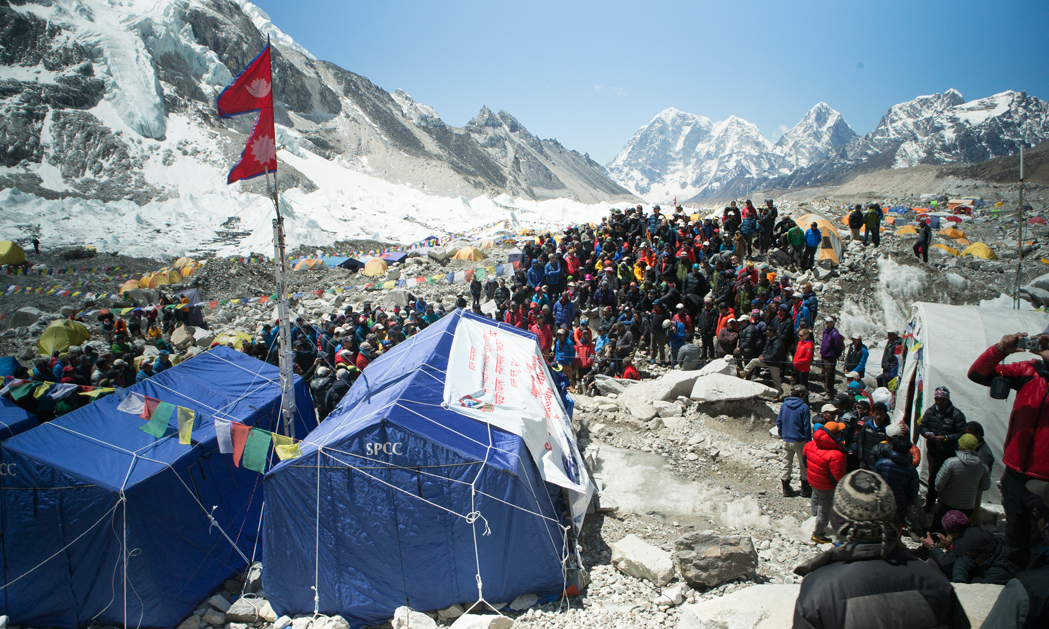
It’s interesting you say, “little things” because it does feel like when the argument in the film turns into push and shove there’s obviously a very high-tension backdrop. Was it just one insult too many that sparked that off?
Yeah, I think so. I think it was probably a case of the straw that broke the camel’s back. And I think contributing to that is the fact that the Sherpas have, in a very short space of time, gone from relatively uneducated to very well educated. I think someone in the film says, “20 years ago, barely any Sherpas would have even been to high school.” Now, all the Sherpas are finishing high school. And I think what you see there are these young lives who have gone overseas at great expense – whether sponsored or how they’ve raised the money – and received international guiding qualifications. And they feel that they deserve to be treated with the same respect that the foreign guides are. And so they’re building in confidence and there’s definitely ego and testosterone at play here, which is a very natural thing.
So when people treat them like they’re idiots, they react to it. Whereas they may not have reacted like that, and in that way, ten years earlier. I think it also came down to the fact that the specific insult was “motherfuckers”. On a mountain which is called Chomolungma which means Mother Goddess of the Earth it’s particularly culturally insensitive. It literally makes a direct insult to the Mother Goddess on which they were standing, so it was a slight too big. You can talk about this particular fight for a long time, and I did read a lot on it, and spoke to a lot of people, but there was also a bit of a history with this guy, Simone Moro, who pissed off a lot of the Sherpas earlier.
There’s a whole film that’s been made about it called High Tension, actually, by a group called Sender Films, which is a really good film that in detail analyses the characters and what went wrong, and all of that kind of thing. Like anything, it wasn’t just a simple thing. It was a build-up of a whole bunch of things. And that particular character involved inflamed things. And I’m not saying whether or not I think this Sherpa overreacted or not. It’s not for me to say. I wasn’t there.
As Kiwis, we love to think that we’re really friendly and easy-going. We don’t take criticism really well. And it’s not that the portrayal of Sir Ed is particularly unflattering or anything like that, but we think of Tenzing Norgay exactly as portrayed in the film. He’s the smiling fellow that helped Hillary. And you kind of lift the lid just a little bit on that, that maybe our starting point is quite a patronising view of him.
Well, I mean, I think things were different back in the ’50s, weren’t they? And to behave that way to someone like Tenzing was very normal. I don’t think they were being rude necessarily, but 50 years on, 60 years on, it kind of does look that way, doesn’t it? And ultimately, I think poor old Tenzing, if you read about the aftermath of what happened in that expedition, he had a really tough time. And he was sort of pulled from pillar to post, and ultimately, as Ed Douglas says in the film, he wasn’t adequately recognised for what he had achieved. I mean, he climbed Everest seven times at that point, nearly to the top. Sorry, six times. This was his seventh attempt.
I think there was a whole lot of knowledge that went with that and he was really integral to the success of that expedition and probably wasn’t given the respect he deserved, and that’s to say nothing again Edmund Hillary, because he had really nothing to do with any of that.
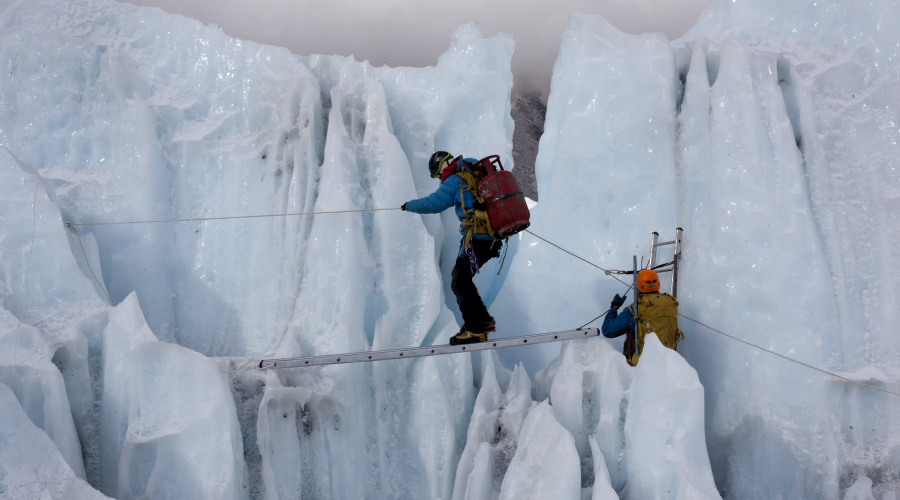
The other really Kiwi connection that I want to touch on is the Hollywood film ‘Everest’. And watching that, it seemed that Rob Hall was in many respects a victim of over-commercialisation of the mountain. Do you think that’s accurate and it’s a problem that’s continued to develop?
Do I think that’s accurate? Well, absolutely, but he was the one driving the commercialisation. He was the trailblazer when it came to running commercial Everest expeditions. So he was a victim of his own success in that regard. And the interesting thing about the Everest film, which is about the 1996 disaster on Everest, is that Krakauer [author of Into Thin Air, which details the tragedy] was there to write a story about the commercialisation of Everest. And they look like the glory days now by comparison to what Everest is like now. I think for that reason, Sherpa was quite timely. Because we were doing the international festival circuit when Everest came out. And the Sherpas all started to contact me to ask me when our film was coming out, because this film didn’t show any Sherpa faces.
But, yeah, commercialism, if you look at the statistics, after 1996, the numbers kind of tripled then quadrupled and it’s just been going like that ever since. And I think that’s part of the mythology that continues. Everest has a great hold over many imaginations, put it that way, and it seems to only to be increasing.
Click here for ‘Sherpa’ movie times


















